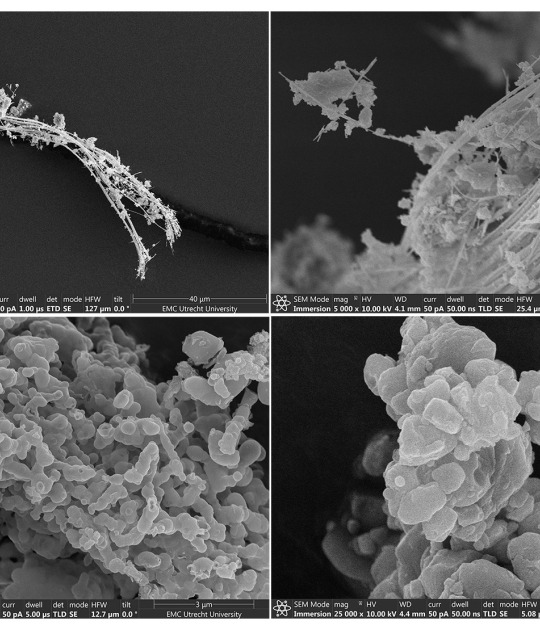The exhibition curated by Peter Galassi proposes a profound journey through the career of this famous photographer Brassaï born in Brassó, (Transylvania, Romania), who, during the interwar period, greatly enriched the potential of photography as a form of artistic expression.
The exhibition has the exceptional loan of the Estate Brassaï Succession (Paris) and other funds from some of the most important institutions and private collections of North American and European origin, The Art Institute of Chicago, The Museum of Fine Arts (Houston), The Metropolitan Museum of Art (New York), The Museum of Modern Art (New York), the Musée National d'art moderne-Center Pompidou (Paris), The Philadelphia Museum of Art, The San Francisco Museum of Modern Art, David Dechman and Michel Mercure, ISelf Collection (London), and Nicholas and Susan Pritzker.
Organized in 12 thematic sections, it is composed of more than 200 pieces (vintage photographs, several drawings, a sculpture and documentary material). The two sections, dedicated to the Paris of the thirties, are the main protagonists.
Peter Galassi was chief curator of the Department of Photography at the Museum of Modern Art in New York from 1991 to 2011, the first Brassaï retrospective organized since 2000 (Pompidou Center) and the first to take place in Spain since 1993.
After passing through Barcelona and Madrid will be exhibited at the San Francisco Museum of Modern Art (SFMOMA), from November 17, 2018 to February 17, 2019.

![Brassaï. Bal des Quatre Saisons, rue de Lappe. c. 1932. 49.8 x 40.4 cm [Plaisirs 2] Estate Brassaï Succession, Paris. © Estate Brassaï Succession, Paris Brassaï. Bal des Quatre Saisons, rue de Lappe. c. 1932. 49.8 x 40.4 cm [Plaisirs 2] Estate Brassaï Succession, Paris. © Estate Brassaï Succession, Paris](/sites/default/files/styles/mopis_news_carousel_item_desktop/public/metaloucs_brassai_estate-brassai-succession-paris_02.jpg?itok=UuqK63e7)
![Brassaï. Lovers at the Gare Saint-Lazare. c. 1937. 23.6 x 17.3 cm [Plaisirs 143] Estate Brassaï Succession, Paris. © Estate Brassaï Succession, Paris Brassaï. Lovers at the Gare Saint-Lazare. c. 1937. 23.6 x 17.3 cm [Plaisirs 143] Estate Brassaï Succession, Paris. © Estate Brassaï Succession, Paris](/sites/default/files/styles/mopis_news_gallery_first_deskop/public/metaloucs_brassai_estate-brassai-succession-paris_04.jpg?itok=9uvGd-48)
![Brassaï. Montmartre. 1930-31. 29.8 x 39.6 cm [Paris de jour 472.C] Estate Brassaï Succession, Paris. © Estate Brassaï Succession, Paris Brassaï. Montmartre. 1930-31. 29.8 x 39.6 cm [Paris de jour 472.C] Estate Brassaï Succession, Paris. © Estate Brassaï Succession, Paris](/sites/default/files/styles/mopis_news_carousel_item_desktop/public/metaloucs_brassai_estate-brassai-succession-paris_01.jpg?itok=FayuKn0v)
![Brassaï. Lobster Seller, Seville. 1951. 49.3 x 37 cm [Étranger 401] Estate Brassaï Succession, Paris. © Estate Brassaï Succession, Paris Brassaï. Lobster Seller, Seville. 1951. 49.3 x 37 cm [Étranger 401] Estate Brassaï Succession, Paris. © Estate Brassaï Succession, Paris](/sites/default/files/styles/mopis_news_carousel_item_desktop/public/metaloucs_brassai_estate-brassai-succession-paris_03.jpg?itok=DhV5gqHU)













![Brassaï. Lovers at the Gare Saint-Lazare. c. 1937. 23,6 x 17,3 cm [Plaisirs 143] Estate Brassaï Succession, Paris. © Estate Brassaï Succession, Pari Brassaï. Lovers at the Gare Saint-Lazare. c. 1937. 23,6 x 17,3 cm [Plaisirs 143] Estate Brassaï Succession, Paris. © Estate Brassaï Succession, Pari](/sites/default/files/styles/mopis_home_news_category_slider_desktop/public/lead-images/exposicion-brassai-de-metalocus_exposicion-brassai_fundacion-mapfre-barcelona_-estate-brassai-succession-paris_15.jpg?h=9daa14a7&itok=Pb5dDHmM)
![View of Washington Street, Boston [View East from Pi Alley, Boston] 2008, copy of 2009 Gelatin silver copy 34,6 x 27,3 cm. Photograph ©Nicholas Nixon. Courtesy of Fraenkel Gallery, San Francisco. Via Mapfre View of Washington Street, Boston [View East from Pi Alley, Boston] 2008, copy of 2009 Gelatin silver copy 34,6 x 27,3 cm. Photograph ©Nicholas Nixon. Courtesy of Fraenkel Gallery, San Francisco. Via Mapfre](/sites/default/files/styles/mopis_home_news_category_slider_desktop/public/lead-images/metalocus_nicholas-nixon_mapfre_02.jpg?h=b1e590ac&itok=UtwN94Gt)






